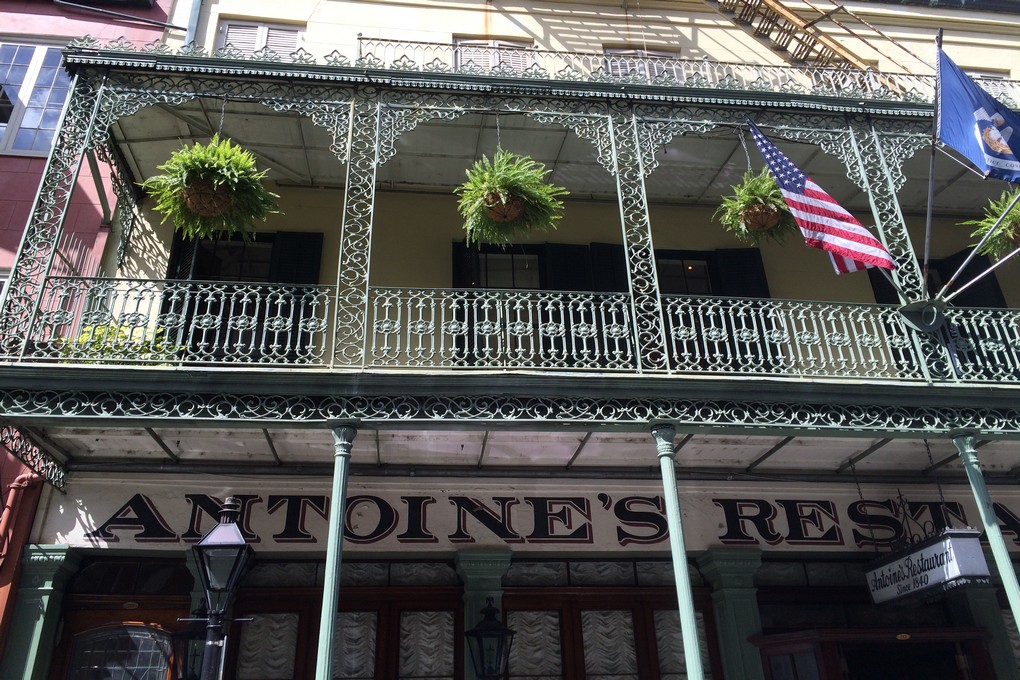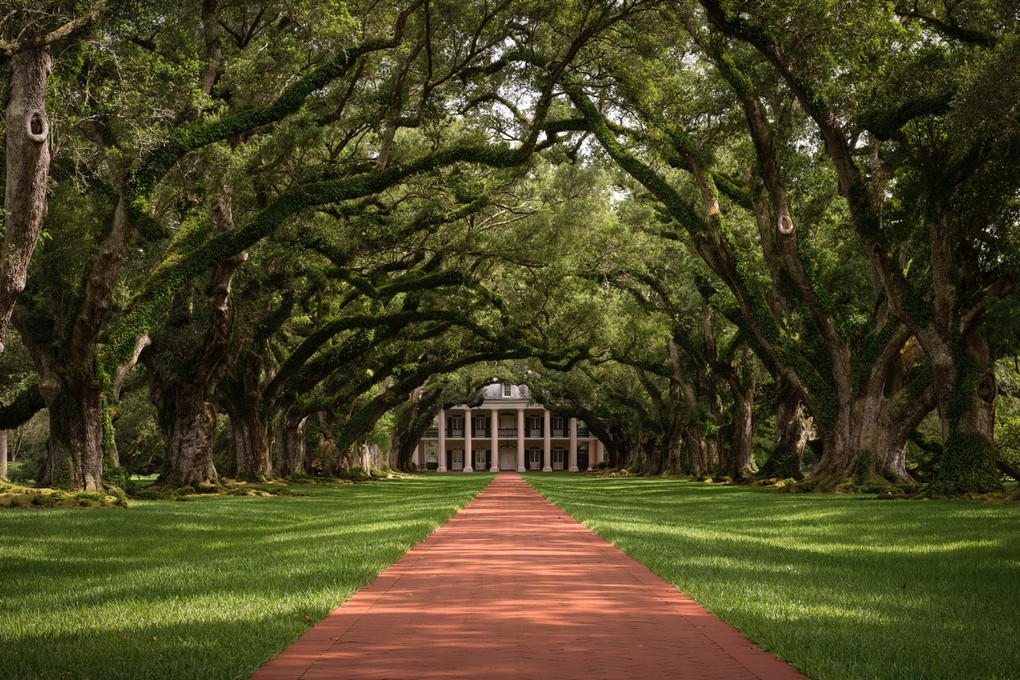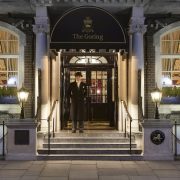Ten Great Things to Do in New Orleans
Walk through historic New Orleans and you are likely to see musicians playing on one corner, a busker on the other and if you are lucky a jazz band parading along the street.
New Orleans is the home of fabulous music and great food with a few surprises thrown in.It’s the type of place that just gets under your skin and the more you scratch the surface the more fascinating it becomes.
Nicknamed the Big Easy, it is located on the Mississippi River, near the Gulf of Mexico, in the state of Louisiana.
Planning a trip there? Then make sure you add on a few extra days as there’s so much to see and do, you will wish you stayed longer.
1. Jump aboard a jazz tour.
Take the Cradle of Jazz Tour with John McCusker, who worked for 30 years as a New Orleans photo-journalist at the Times-Picayune and the New Orleans Advocate. The author of Creole Trombone: Kid Ory and the Early Years of Jazz, he started the tour in 1994.
First stop is Congo Square described as the birthplace of jazz where slaves would once gather every Sunday afternoon, their one day off for the week and play drums, bells, and other musical instruments creating music as they sang and danced.
Other places of interest include Perseverance Hall, an historic building within the New Orleans Jazz National Historical Park, where entertainers play today.
We also pass the residence of Jelly Roll Morton who claimed to have “invented” jazz, and home of Sidney Bechet, an American jazz saxophonist and composer.
Other notable landmarks include the red-light area of Storyville, where jazz and swing music are believed to have originated, the Eagle Saloon, one of the only remaining structures from the early days of jazz still standing, Iroquios Theatre, where many of the jazz greats visited during the day and Karnofsky Tailor Shop, where a young Louis Armstrong, is believed to have worked.
You pass the home of Kid Ory, described by McCusker as one of the most influential bandleaders in New Orleans, Lafayette Cemetery number 2 where jazz greats are buried and King Oliver’s residence. Joe “King” Oliver was one of the most important figures in jazz and Louis Armstrong was his protégé.
McCusker plays a selection of jazz on the tour that will have your feet tapping. It’s a great tour for jazz and music lovers. www.cradleofjazztour.com
2. Head to Frenchmen’s Street for fabulous music.
Away from the partying crowd of Bourbon St, Frenchmen’s district is a great place to visit and is where the locals hang out. It is walking distance from Bourbon St and the French Quarter and home to a dozen or so great jazz clubs. Stop in at any of the music halls but don’t forget to leave a tip for the band if you love their music. Standouts include the Spotted Cat, Maison and Bamboulas. There are lots of late night cafes in the area and art lovers will enjoy visiting the late-night art and craft market. www.frenchmenstreetlive.com
Chef Amy Sins cooking up a storm
3.Sign up for a cooking class
Gourmet chef dynamo, Amy Sins puts the fun into cooking at Langlois, a modern culinary farm-to-table supper club with an emphasis on great food. It’s a one of a kind dining experience for adventurous eaters and the culinary curious. Sims says food is her passion and she always wanted to open a restaurant where diners felt like guests at her table, where they learn to cook, drink too much and tell wild stories just like she does at home with her loud, food-loving friends.
Born and raised in South Louisiana, Sins has Cajun and Creole cooking woven into her culinary DNA.
In 2005, when Hurricane Katrina threatened to destroy the community, she wrote the award-winning Ruby Slippers Cookbook: Life, Culture, Family and Food after Katrina, which told the story of life in the aftermath of the storm. She opened Langlois in 2012. Sins says the most common misunderstanding of Creole and Cajun cuisine is that they are interchangeable.
“The two cuisines are most distinct and the diverse history of the area’s people and the landscape have contributed to the evolution of both cuisines,” she says. Meals are prepared in the state of the art open kitchen where guests watch, learn, lend a hand and enjoy a three-course meal with wine pairings. It’s a combined meal, restaurant and cooking class rolled into one. It’s all about fabulous food and fun and Amy is not only a great chef – she’s a fabulous entertainer.
Langlois is named after Madame Langlois – the mother of creole cuisine who is credited with teaching the first recorded cooking class in North America. www.langloisnola.com
4. Visit the Louisiana swamps.
New Orleans is surrounded by swampland and the bayou is often considered a dark place and has a great history.
It was once the haunt of pirates but today it’s a nature lover’s paradise.
Head out on a Pelican New Orleans swamp tour and discover what lurks below the water of thick green blanket of Louisiana swampland.
Spanish moss covers most cypress trees and fallen branches and we see snapping turtles on logs, lots of birds including herons, egrets and pelicans as well as lizards. But it’s those hefty gators that the crowds come to see.
Timber barons once exploited the swamplands for the cypress timber which is rot-resistant. The eco-tour provides a great experience in the swampland as we glide over still waters in a flat-bottomed boat. Just a short drive from New Orleans, it’s a fun, educational nature tour with a great commentary. www.pelicanneworleans.com
5.Take a cemetery tour.
New Orleans cemeteries are fascinating and have become part of the city’s major tourist attractions.
There are 42 cemeteries but the most visited include St Louis Cemeteries number 1 – one of the oldest, most famous and most haunted cemeteries in New Orleans. It is the burial place of Marie Laveau, the legendary “voodoo queen. It appeared in the film Easy Rider and houses the pyramid-shaped tomb that actor Nicholas Cage has reserved as his final resting place.
The Lafayette Cemetery, established in 1833, has featured in the movie, Double Jeopardy.
6. Visit the French Quarter.
Settled in 1718, the city developed around the Vieux Carre, a central square that became known as the French Quarter. These days it’s home to historic boutique hotels, jazz clubs and amazing restaurants. The oldest neighbourhood in New Orleans, is a charming place to visit.
There’s Jackson Square and the beautiful St Louis Cathedral that date back to the 1800s and the entire district has been designated a national historic landmark.
Since the 1920s, the houses have been protected by law and can’t be demolished. They feature elaborate ironwork and many home have been turned into galleries.
The French Market is a great place to see original art and craft work and enjoy local treats and produce.
7.Take a Mississippi cruise
Head down the mighty Mississippi on the Natchez, the ninth steamer to bear that name. It was her predecessor that raced the Robert E Lee in the most famous steamboat race of all time. Even today, the Natchez is proudly the undisputed champion of the Mississippi, never having been beaten in a race.
It’s a line that follows the course of river history, from the placid antebellum plantation era through the turbulence of the Civil War to the Gay Nineties.
When the New Orleans Steamboat Company launched the Natchez in 1975, they revived more than a famous name. They created one of only two true steam powered sternwheelers plying the Mississippi today.
There’s much to love about this steamboat – the genuine copper and steel steam whistle is a treasured antique. Her copper bell, smelted from 250 silver dollars to produce a purer tone, once graced the S.S. J.D. Ayre. www.steamboatnatchez.com
8.Dine your way around New Orleans.
From Cajun cooking to fusion food, New Orleans has it all – here are some of the best.
Court of Two Sisters
Named after two sisters born in 1858 and 1860, their shop outfitted many of the finest women with Mardi Gras costumes, formal gowns and lace and perfume from Paris. It was taken over by the Fein family in 1963 who opened the restaurant.
The restaurant is known worldwide for its live jazz brunch, romantic Creole dinners, friendly service and beautiful, open-air courtyard. In 2013, the Fein Family celebrated 50 years at The Court of Two Sisters.
It’s a great dining experience. www.courtoftwosisters.com
Chef Nina Compton
Compere Lapin at Old 77Hotel and Chandlery
This innovative restaurant was named New Orleans’ 2016 Restaurant of the Year by The Times-Picayune and is worthy of such an award.
Chef Nina Compton’s uses indigenous ingredients of the Gulf while melding the flavors of her Caribbean upbringing with her love of French and Italian Cuisine.
Compère Lapin which means “brother rabbit” draws inspiration from Compton’s childhood in St Lucia where she read traditional Caribbean folktales featuring a mischievous rabbit named Compère Lapin. Embracing the story’s themes of exploration and play, the restaurant features an inventive menu that celebrates Compton’s roots and the flavors of New Orleans.
It’s a fabulous dining experience and try one of the innovative cocktails.www.comperelapin.com
Brennan’s
The original Brennan’s, opened in 1946 and has recently undergone an extensive renovation.
It features eight glamorous dining rooms and has a great menu.
The menus are rooted in Creole traditions and are bolstered with contemporary New Orleans influences. It combines classic and modern techniques to create an innovative approach and enhances local, seasonal offerings. The rooms are each steeped in New Orleans architecture and ambiance.
The famous Brennan’s Banana Foster made with bananas, butter, brown sugar, cinnamon, rum, New Orleans Ice Cream Co. vanilla bean ice cream, flambeed tableside lives up to its glorious reputation.www.brennansneworleans.com
Antoine’s Restaurant
It has a 176-year- old legacy and is still owned and operated by fifth generation relatives of the original founder, Antoine Alciatore.
Step inside and you are immersed in a wonderful history and a fabulous dining experience. The world-renowned French-Creole cuisine, impeccable service and wonderful atmosphere have created a great dining experience.
Antoine’s 14 dining rooms each have a unique history and charm dating back to1840, when New Orleans was queen city of the Mississippi River, when cotton was king and French gentlemen settled their differences under the oaks with pistols for two and coffee for one.
Antonie’s son, Jules served as an apprentice under his mother’s tutelage for six years before she sent him to France where he served in the great kitchens of Paris, Strassburg and Marseilles.
He returned to New Orleans and became chef of the famous Pickwick Club in 1887 before his mother summoned him to head the house of Antoine.
His genius was in the kitchen where he invented Oysters Rockefeller, so named for the richness of the sauce. They remain one of the great culinary creations of all time and a closely-guarded Antoine’s secret.
The 1840 Room, a replica of a fashionable private dining room, still contains the great silver duck press and is a museum of treasures including a cookbook published in Paris in 1659.
Antoine’s has survived the War Between the States, two World Wars, Prohibition, the Great Depression and Hurricane Katrina.
Many celebrities have dined there including George Bush, Bill Clinton, Franklin Roosevelt, Pope John Paul II, Brad Pitt, Bruce Willis, Tom Cruise, Kate Hudson, Jimmy Buffet, Whoopi Goldberg, Bob Hope and Bing Crosby. www.antoines.com
Cafe du Monde – the original French Market coffee stand dating back to 1862– try the famous beignets and you can also watch them being made from a window. www.cafedumonde.com
9.Take a walk down Bourbon Street
Bourbon Street is rich with historic venues, social tales and iconic buildings. The street dates back to 1798, when New Orleans was founded by Jean-Baptiste Le Moyne de Bienville.
Also, known as “Rue Bourbon,” the monumental street sits at the heart of the French Quarter extending 13 blocks from Canal St. to Esplanade Avenue.
Hotels with an historic past include The Royal Sonesta Hotel that opened in 1969 – the hotel’s site dates back to 1721, when Adrien de Pauger first laid out the city of New Orleans.
Galatoire’s Restaurant, one of New Orleans’ oldest and most popular restaurants is another historic landmark. Founded by Jean Galatoire in 1905, it specialises in French Creole cuisine.
Bars
Iconic bars include Jean Lafitte's Blacksmith Shop located in a creole cottage. The walls of the bar and restaurant are full of legends, mystery and days of old New Orleans. The building was built sometime before 1772 and is said to be where the Lafitte brothers opened their blacksmith shop as a façade so they could carry out their privateer efforts.
The Old Absinthe House building, which was originally built in 1806 as a family-owned importing firm is also another must visit. As years went on, the ground floor became a saloon where in 1874 mixologist, Cayetano Ferrer, created the famous Absinthe House Frappe. You can still taste the celebrated drink today. The decorative marble fountains that were used to drip cool water over sugar cubes into glasses of Absinthe can still be found in this historic bar.
There’s music on every corner and pop into Fritzel’s European Jazz Club. Located in an 200- year-old building, there are traditional jazz performances every night.www.bourbonstreet.com.
10. Visit the National World War II Museum
This excellent museum tells the story of the American Experience in the war that changed the world—why it was fought, how it was won, and what it means today.
It is now the top-rated tourist destination in New Orleans, and an unforgettable way to experience World War II—from industrial efforts on the Home Front to the combat experience of the American soldier abroad. It features a sweeping narrative and poignant personal detail with immersive exhibits, multimedia experiences and an expansive collection of artifacts and first-person oral histories.
Leave plenty of time as you could spend a whole day visiting the soaring pavilions that house historical exhibits, on-site restoration work, a period dinner theatre, and restaurants. www.nationalww2museum.org
Out of the city
Oak Alley Plantation
The Oak Alley Plantation has an interesting 175-year- old history. It has been a sugar plantation, an abandoned investment property and cattle ranch.
Today, it’s one of the most beautiful plantation houses with a stunning row of oak trees that date back more than 200 years.
It is a stunning sight and well worth a visit. www.oakalleyplantation.com
For more information visit New Orleans Convention and Visitors Bureau www.neworleanscvb.com
Places to Stay
Renaissance New Orleans Pere Marquette Hotel – a 1950s high rise renovated with flair, great rooms and photography by local artists. www.renaissanceperemarquette.com
Maison Dupuy Hotel – 200-room hotel in the heart of the French Quarter, a great base with excellent facilities including a pool www.maisondupuy.com
Soniat House – Member of the Small Luxury Hotels, luxury bolthole with a great history. www.soniathouse.com www.slh.com
Photos New Orleans Convention and Visitors Centre , Helen Hayes, Sue Wallace







![2 T UMAX Mirage IIse V1.2 [6]](https://thefinerthingsintravel.com/wp-content/uploads/2017/04/000004.jpg)













